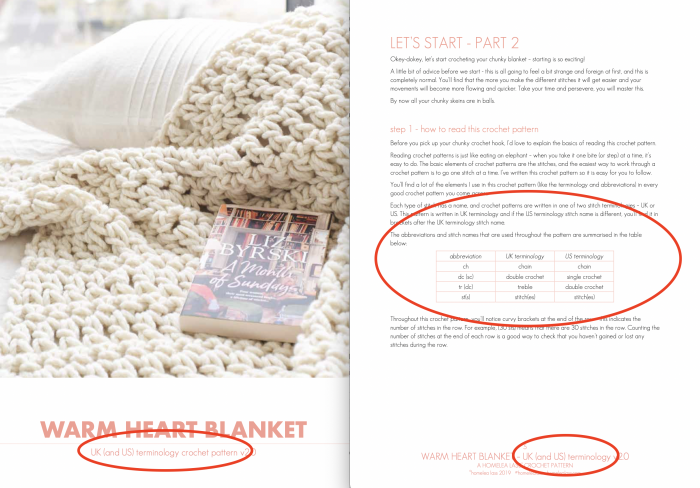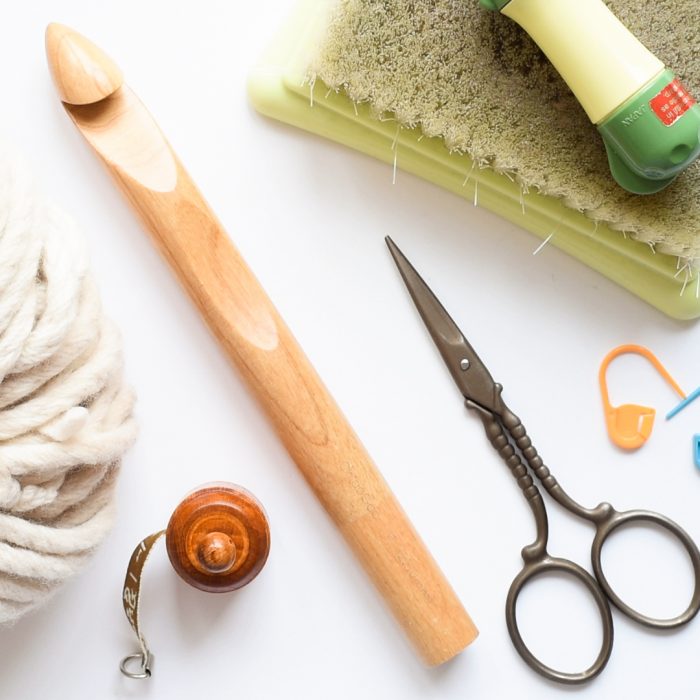FREE SHIPPING OVER $100: orders will be sent by Wednesday 7th May
Cart
Should I use UK or US crochet terminology?
The basic elements of crochet patterns are the stitches, and if you concentrate of making one stitch at a time you can crochet anything. A common problem that crocheters have is knowing whether to use the UK or US crochet terminology when following a pattern.
The good news is that once you understand what the terminologies are and how they work they’re no longer scary, and I’ll explain it to you down below.
What are crochet terminologies?
Just like we have different languages throughout the world, there are 2 different crochet terminologies – UK terminology and US terminology. All crochet patterns are written using one, or both, of these terminologies.
To complicate things even more, the 2 different terminologies use the same name for different stitches. For example, double crochet in the UK terminology is a different stitch to double crochet in the US terminology.
In the table down below you can see some of the common crochet stitches and their names in both the UK and US terminologies. When I write my crochet patterns I put the UK terminology first, and if the US terminology is different, I put it in brackets.
How do I know which crochet terminology to use?
All good crochet patterns will specify which terminology is used, and this can generally be found at the start of the pattern. Down below I’ve circled where you’ll find the terminology in my Warm Heart Blanket crochet pattern:
- on the first page
- just before the start of the crocheting instructions
- in the footer of every page
What if I can’t work out what crochet terminology is used in a pattern?
Unfortunately, not all designers specify the terminology that they’ve used in a pattern. When this happens, I look to see if “single crochet” or “sc” is used any where in the pattern. This stitch name is only found in the US terminology, so if it’s in the pattern you know that it’s using US terminology.
Still not certain? Get in contact with the designer and ask which terminology the pattern is written in.
I hope this has helped demystify crochet terminologies for you.
With love, Lynda.
Author
Lynda | Homelea Lass
Hi! I’m Lynda (she/her) and I’m the lady behind Homelea Lass.
I’m here to help you improve your crochet skills and to help you find peace and happiness in your creative time.
In 2012 I was knocked down by debilitating chronic fatigue that put an end to my blossoming career as a Civil Engineer and Project Manager.
Early on in my illness, I discovered that I could crochet without draining my energy, so I spent my days crocheting, researching yarns and designing – this is how Homelea Lass was born.
My experience with chronic illness has guided me to combine my passion for exceptional design and crochet. I’ve developed a way of crocheting that’s enjoyable, easy to understand, and maximises it’s relaxing and wellbeing properties.
As my healing journey has progressed, Homelea Lass has grown, and I feel blessed that I can share my love of Australian merino wool, chunky crochet and creativity with you.


